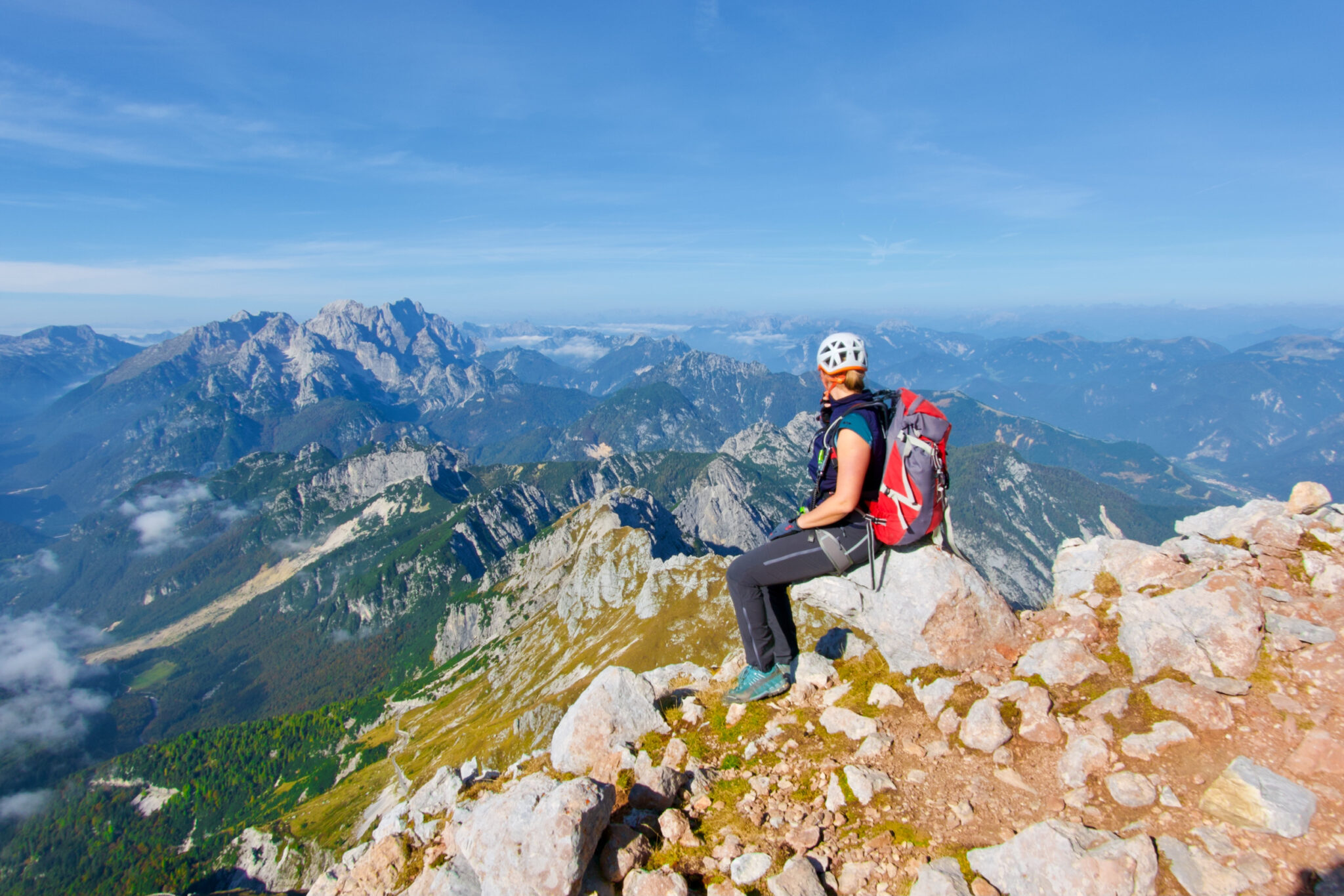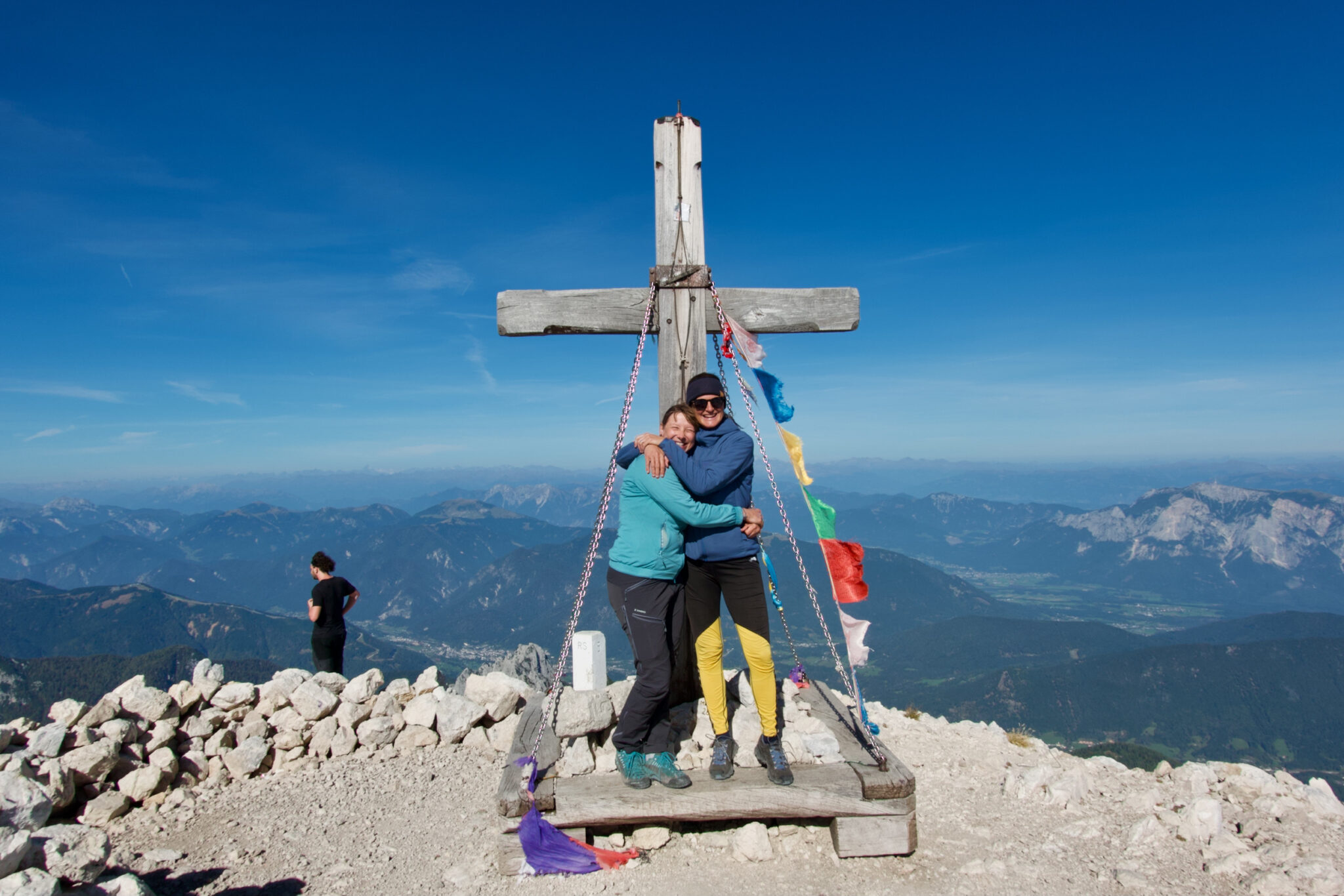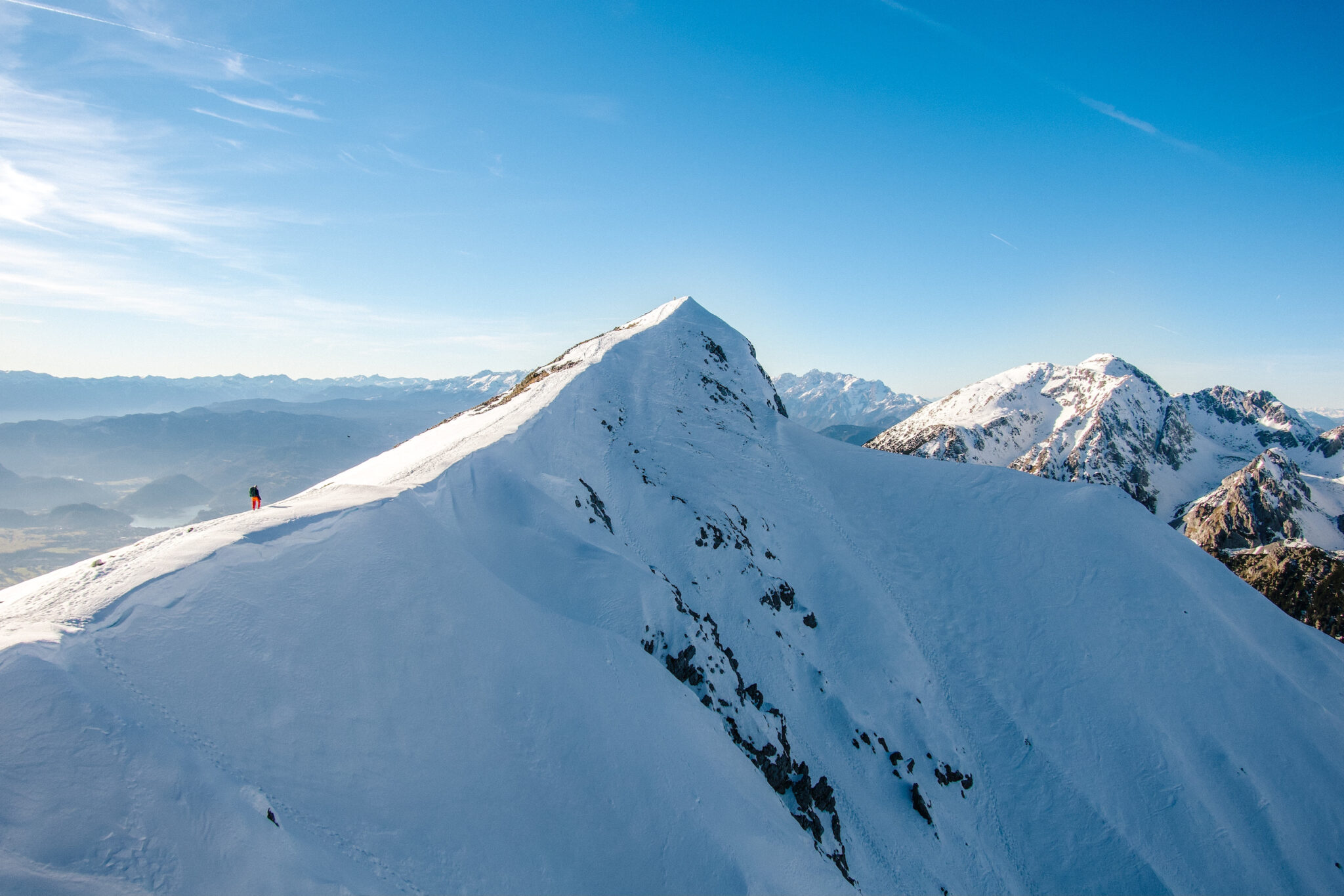Here are twenty photos and a story about how we tackled to climb Mangart. Enjoy!
Beautiful and rugged, the Julian Alps have unbelievable charm. Towering mountains, boulders scattered along long scree slopes under unforgiving crumbly limestone walls, streams plunging into sudden gorges. Yet in between all that, you’ll find soft sun-stroked meadows which explode with colorful wild flowers in the summer, enchanting forests and high peaks with hypnotic views. The northwestern Julian Alps might even be the most photogenic corner of the Slovenian mountains, and Mangart, the third highest peak of Slovenia, together with the highest road to its Mangart Saddle at 2,055 meters their very best gems.

Exploring Slovenia’s best climbs:
Mangart via Ferrata
Mala Mojstrovka via Ferrata
Triglav from Pokljuka
Bovški Gamsovec
Under an early autumn sun we followed the winding road into the embrace of the mountains. The landscape here was what limestone and lots of geological activity had made it—unruly and rugged. Curvy and wavy rock walls around the Mangart Saddle take us to the times when the rocky grounds, which were then still under the sea, started to compress themselves and fold together, rising into what is known today as the Alps. Visible on the surface are the rocky compounds from the Upper Triassic, Jurassic, and also Cretaceous sediments. You can see fossils of corals and sea snails, you can see vivid red rock made of Cretaceous limestone, you can even see Jurassic neptunian dikes, deposit-filled fractures in older rocks that intrigue paleontologists as they may provide unique insights into ancient cryptic submarine cave ecosystems.


I don’t think I’m far off the mark when I say that the Mangart Saddle and Mangart, 2,679m, offer something for everyone. Geologists and paleontologists love them for the special rock formations, climbers for a good and not particularly long climb, and the remaining flock here just to soak up the beauty of one of the most spectacular corners of Slovenia.
There’s nowhere quite like it. Here are some of my favorite photos from my climb up Mangart – Enjoy!



Read more on Blog:
Best mountain hikes in Slovenia in summer 2023
Fairytale loop hike above Srednji Vrh
Safe winter trails that will blow your mind
We parked in a parking lot half an hour from the actual saddle. The road further up had been damaged by an active rockfall – not surprising after the abundant rainfall and floods in the past summer. It was the last gorgeous October day before the approaching bad weather of early November was forecasted to bring snow high up in the mountains. Our goal of the day was to climb Mangart on the Slovenian Route and then descend back down on the easier Italian Route.
This borderline mountain in fact lies half in Slovenia and half in Italy. Although the road to the Mangart Saddle was built by Italians in 1938, it is today in the Slovenian territory in its entirety. The trail onwards to the peak of Mangart continues on the Slovenian side but at around 2,200m elevation it splits into two. The more demanding one, also called the Slovenian Route, approaches the top over the western face on the Slovenian side of the mountain, while the less demanding Italian Route climbs up on the north-eastern side which happens to be in Italy.
Our adventure started with an easy walk up the gradually ascending road to the Mangart Saddle. Rewarded by sublime views, I could suddenly understand perfectly well why people drove such a long distance only to see that landscape. It truly was spectacular. The sheep flocked around us, curious to see if we brought treats, the small but cozy hut waved a warm invitation for a tasty lunch after the climb, and the peak of Mangart looked tranquil and welcoming. Not a cloud was in sight and the surrounding peaks were already basking in the golden morning sun.



We reached the western face of Mangart, put on the via Ferrata climbing gear and started the climb. The route is essentially a series of sections of secured climbing over an incredibly steep wall, occasionally broken with unsecured sections over crumbly but less steep slopes. If you are skilled and keep your wits about you, it’s truly not that hard. But, anyone with insufficient climbing experience, and nervous of exposure may find this climb unnerving as one slip could lead to a massive fall.



Join our Guided Tour to Mangart
Explore Slovenia’s other climbing tours: Mala Mojstrovka and Prisojnik
Note to the wise: we climbed Mangart in completely snow-free conditions. If you want to climb Mangart or any other peak in the Slovenian mountains in snow conditions (that can last well into July!), and don’t have sufficient climbing experience and skills, do get a mountain guide!
The Slovenian Route did pose a few technical details which demanded more attention and skill to climb safely, but, overall, it offered the safety cable to be clipped on wherever we needed it. The Italian Route on the way down was technically speaking easier, yet it still required our full attention and the use of our hands to be able to climb down safely.
Stats of the tour: 860m of ascent and descent, 7.7km distance
Of which climbing up: 460m of ascent and 870m distance.


Read more on Blog:
Beginner winter climb in the Slovenian mountains: Mala Mojstrovka
Make Triglav a winter climb
Viewpoints of Lake Bled for a perfect postcard
The climbing part to the imposing 2,679-meter peak took us two hours, regardless of the mere 870-m distance and 460m of ascent. It must’ve been the countless ‘wows’ and photo stops on the way. We gasped at the views of the steep mountains soaring above the meadows of the Mangart Saddle, and awe-inspiring mountains rising above the green valleys like Loška, Mangartska and Soča Valleys. We gasped at the Belopeška Lakes (Italian: Laghi di Fusini) glistening on the gorgeous autumn day down below in the valley. We gasped at Mt. Jalovec, which seemed like a stone’s throw away, Triglav, boasting its greatness from its modest position in the background, and many peaks in between.





Exploring Slovenia’s best winter treks:
Guided Day Hike to Mrežce
Snowshoeing in the Julian Alps
Alpine Pastures of Velika Planina
Mangart wasn’t my longest not even my biggest climb, however, I felt a great sense of accomplishment. Indeed, it is the third highest mountain of Slovenia and as such notorious from the old family mountain stories and occasional accident reports in the news. Contented and pleasantly tired, we drove off, happily chatting about our return next summer. It might be nice to see it green, lush and carpeted with flowers.
Do you want to visit the Mangart Saddle and Mt. Mangart? Are they on your bucket list? Share!

Stay tuned for more outdoor adventures! Join eighty thousand Exploring Slovenia fans by liking us on Facebook, Twitter, and Instagram. If you enjoyed this story, sign up for the monthly exploringslovenia.com/blog newsletter. A handful selection of stories from Hiking and Climbing in Slovenia, delivered to your inbox every month.
Looking for a gorgeous tour in the mountains? Exploring Slovenia offers guided hiking and climbing tours!











